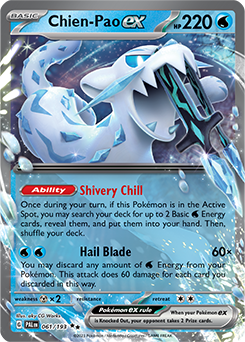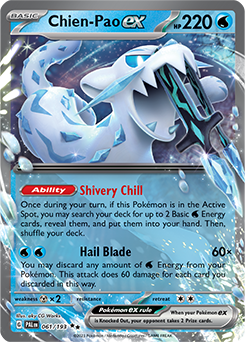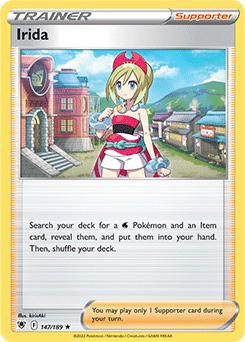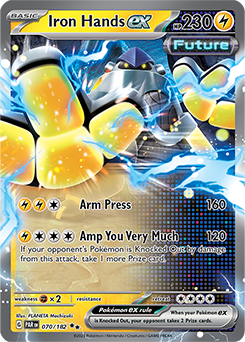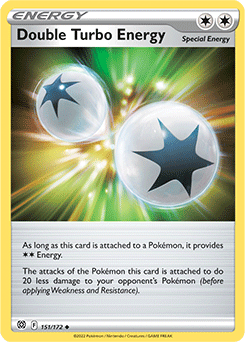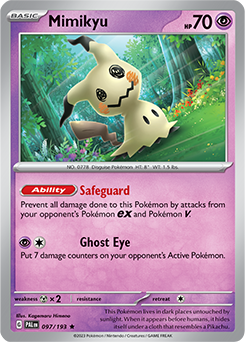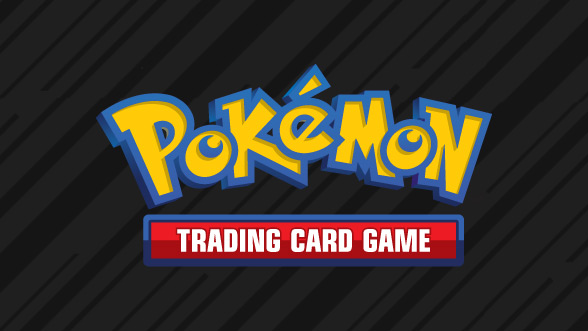Read on below to learn more about some official Pokémon TCG deck strategy tips:
Get tips on how to construct winning Pokémon TCG decks from a variety of starting points.
With so many interesting Pokémon to choose from and exciting strategies to explore, building your own deck is one of the most enjoyable and rewarding elements of the Pokémon Trading Card Game. Before you begin, it’s important to note that each deck must contain exactly 60 cards—with at least one Basic Pokémon—and cannot contain more than four copies of any card (except Basic Energy).
There are a lot of ways to approach deckbuilding. Some decks focus on one type of Pokémon such as Fire type or Psychic type, while others may focus on an individual Pokémon’s Ability or particularly powerful attack. Decks can include an even distribution of Pokémon, Trainer cards, and Energy cards, or they can be heavily skewed to include, say, mostly Pokémon and virtually no Energy. With so many options available, the task can feel daunting even for the most intrepid deck builder.
The good news is a variety of methods can result in a winning deck! Let’s take a look at two of the most popular approaches to assembling a solid deck and the design principles that underpin them.
Like the teams of many of the Gym Leaders you’ll encounter in the Pokémon video games, a lot of successful Pokémon Trading Card Game decks include Pokémon that are almost all the same type. This approach to deckbuilding has merit because types are often thematic, which means Pokémon of the same type will favor a similar strategy. For example, many Fire-type Pokémon are designed to do loads of damage to the opponent’s Pokémon, whereas Metal-type Pokémon tend to have attacks, Abilities, and access to Trainer cards that prevent or reduce the damage they take from opposing attacks.
In addition, Pokémon of the same type usually use the same type of Energy to attack, and they can often be targeted by the effects of the same Trainer cards. This means it’s much simpler to design a deck around one type of Pokémon rather than many types.
We’ll use the following Water-type deck as an example:
After choosing the type of Pokémon to build the deck around, the next step is to choose the Pokémon we want to include. When evaluating a Pokémon, it’s important to consider its Hit Points (HP), the damage done by its attacks for each Energy attached to it, any secondary effects of those attacks, and the ease at which the Pokémon can be put into play.
Chien-Pao ex is one of the most powerful Water-type Pokémon around. Its Hail Blade attack only has a cost of 2 Water Energy, but it can scale near-infinitely with the amount of Water-type Energy discarded from the player’s Pokémon. Consider the strengths and drawbacks of Chien-Pao ex with those of Walking Wake ex or an evolved Pokémon like Quaquaval ex, and you can quickly see why it’s such a popular choice.
As a general rule, every deck should include a cast of Pokémon with attacks and Abilities that complement each other. Baxcalibur is the perfect partner for Chien-Pao ex because the former’s Super Cold Ability can be used to rain down plenty of Water-type Energy into play for Chien-Pao ex’s Hail Blade attack.
Although some decks fall out of this range, most decks include around 12–16 Pokémon, about half of which fill the role of attacker. When choosing Pokémon to include in the deck, priority should be given to those that can be searched for by the same Trainer cards as your main Pokémon. These Pokémon should work well together, and they’ll help save space in your deck by not needing their own different sets of supporting cards. If a Pokémon cannot be searched for, then it might be impossible to find when it’s needed in battle. Our Water-type deck uses Nest Ball to search for Kyogre, Bidoof, Radiant Greninja, Frigibax, Chien-Pao ex, and Iron Hands ex. Buddy-Buddy Poffin can specifically search for Frigibax and Bidoof, which are crucial to get into play early since they need to evolve.
To better the chance that players can access key resources when they need them, all decks should include Supporter cards that draw cards from the deck. Professor’s Research and Iono are two popular examples (though our deck largely relies on Irida to search for cards). Our Water-type deck also uses Bibarel’s Industrious Incisors Ability and Radiant Greninja’s Concealed Cards Ability to draw more cards. As you can see, being able to get the card you need when you need it is crucial in the Pokémon TCG. It’s critical to look beyond ways to get a card at the right time besides simply drawing it at the start of your turn.
The remaining space in the deck should be dedicated to Trainer cards that enhance the player’s strategy or disrupt the opponent’s strategy. Trying to do both of these things typically means you’re not going to do that well at either one.
This is the portion of the deck that will differ the most between players because it is often a reflection of personal taste. For example, some players may choose to include the Artazon Stadium card to increase their chance of setting up evolving Basic Pokémon, while others may prefer the PokéStop Stadium card to turbo through their deck and find key Item cards.
The major weakness of a deck comprising one type of Pokémon is…just that! Pokémon of the same type often share a Weakness. This Water-type deck would have a difficult time in battle against a deck that attacks with Metal or Fighting-type Pokémon, as the primary attackers—Chien-Pao ex and Iron Hands ex—are respectively weak to Metal-type attacks and Fighting-type attacks.
Discerning deck builders add one or two Pokémon of a different type to their deck in order to mitigate the impact of a single Weakness. It can’t just be any Pokémon—it needs to be one that can utilize the same type of Energy cards as the other Pokémon in the deck, and one that is consistent with the deck’s overall strategy. For example, this Water-type deck incorporates Kyogre, Radiant Greninja, and Iron Hands ex, which are not weak to Metal-type Pokémon and can mostly use Water-type Energy.
Let’s take a look at another approach to deckbuilding—focusing the strategy on one or two specific Pokémon rather than a type. The amount and type of Energy required for a Pokémon to attack varies, and you have to figure out how you’ll get the Pokémon into play too. Not surprisingly, this means the decks themselves can vary wildly in the nature and spread of Pokémon, Trainer cards, and Energy cards. Fortunately, there are a few steps that deck builders can follow to make any Pokémon shine. Let’s use Great Tusk from the Scarlet & Violet—Temporal Forces expansion as an example in our next deck.
Remember when we mentioned that most decks have about 12–16 Pokémon? This one only has 8, and it has little intention of taking Prize cards! The main goal of the deck is to run the opponent out of cards, and this alternate win condition requires a unique approach. The guidelines are always just that—guidelines—and you should always be ready to boldly diverge from them when the time comes.
The first step is to identify the core components of the deck. These are the cards that are absolutely essential to the deck’s primary strategy. It’s often the case that there are four copies of important cards. The more copies of the same card in a deck, the more likely it is a player will be able to draw that card when it’s needed. You can see this in the example deck: Great Tusk is the star of the deck, so we include four of it, and its Land Collapse attack reaches its full effectiveness when used after playing an Ancient Supporter card. For this reason, we play four copies of both Professor Sada’s Vitality and Explorer’s Guidance.
Great Tusk requires 2 Colorless Energy to use its Land Collapse attack. This means we need to add Energy cards to the deck, and they can be of any type! Double Turbo Energy is the best choice for this deck because it provides 2 Energy and makes it easy to use Land Collapse. Since Land Collapse doesn’t do any damage, there’s effectively no drawback to using Double Turbo Energy. This makes it an easy inclusion at the maximum four copies.
Double Turbo Energy is strong, but four copies aren’t quite enough on their own. For this reason, we include five Fighting Energy to ensure that we deliver enough attacks to run the opponent out of cards. Including Fighting Energy is also crucial to being able to use Professor Sada’s Vitality on any given turn. You can get that Fighting Energy into the discard pile either via Explorer’s Guidance or Radiant Greninja’s Concealed Cards Ability.
The next step is to ensure that the main Pokémon can be retrieved from the deck or discard pile when they’re required for battle. Notice how this Great Tusk deck includes a variety of Trainer cards to achieve that goal—Nest Ball lets you search for Basic Pokémon like Great Tusk, Hisuian Heavy Ball helps you find any Basic Pokémon stuck in your Prize cards, and Super Rod makes it possible to retrieve any Great Tusk that has been Knocked Out. Like the Water-type deck above, Great Tusk also includes Supporter cards and Pokémon with Abilities that enable players to draw these core cards. Access to lots of cards, either by searching with Item cards like those mentioned above or by drawing a bunch of cards (like with Professor’s Research), is extremely important in virtually every deck.
There are more Pokémon than just Great Tusk too! The strategy of this deck is to run your opponent out of cards in their deck with Great Tusk’s Land Collapse attack, but there are other options to support this strategy. You can buy time with Mimikyu in the Active Spot, trap Pokémon in the Active Spot with Mawile, and prevent yourself from running out of cards in your own deck with Pidgeot V. We’ve already talked about Radiant Greninja and how it is pretty crucial for drawing extra cards throughout a battle.
Every deck builder should seek to include cards in their deck that can serve a dual purpose. With the Great Tusk deck in mind, consider the advantage gained by playing Earthen Vessel instead of Energy Search, Explorer’s Guidance instead of Professor’s Research, and Counter Catcher instead of Boss’s Orders. There are basic similarities between these card pairings, but the differences are big enough to sway the outcome of battle. Deckbuilding is made of these small decisions that contribute to the overall result.
Now that you’ve read up on a couple of different approaches to deckbuilding, it’s time to build your own deck!
Remember, the deckbuilding process is all about experimentation, so don’t be disheartened if your first deck does not deliver positive results straight away. Discuss your ideas with friends, test out your ideas on the battlefield, and read on at Pokemon.com/Strategy to turn your deck into a World Championships contender.
Good luck, Trainers!
Source: Pokemon.com
Source: Pokemon

